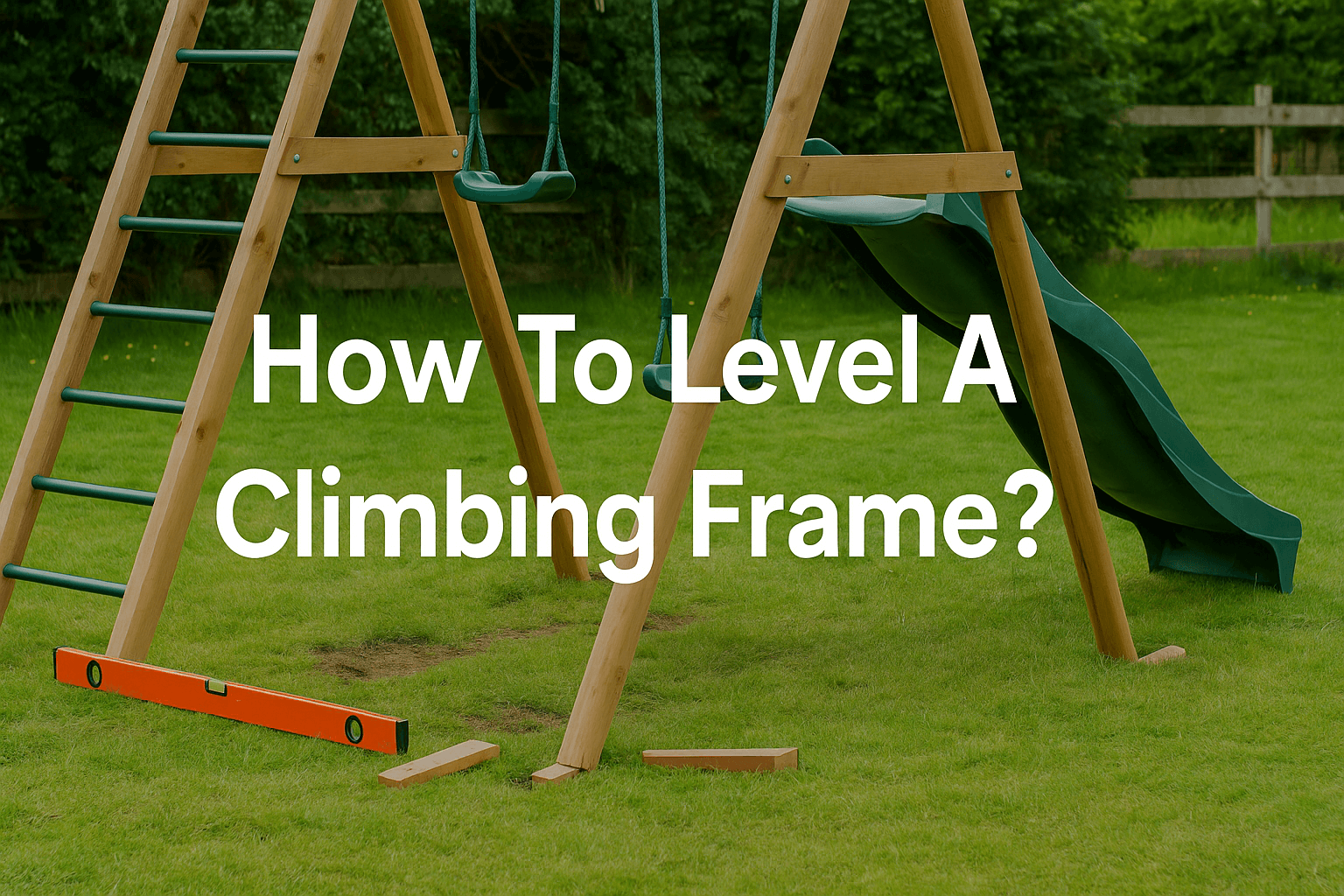
How To Level A Climbing Frame?
Wonky play frame? You’re not alone. From wobbly legs to sloping lawns, getting it level can feel like a circus act. Short answer: use a spirit level, adjust the base, and secure it firmly. Keep reading for parent-proof tips, tools, and hacks to make your garden play-ready (without losing your sanity).
Why Levelling Your Climbing Frame is Crucial
Importance of a Level Base
If you’ve ever watched your child swing from a slightly lopsided frame, you’ll know how important this is. A level base isn’t just about neatness — it’s about keeping things steady, balanced, and safe.
Even if you’re not a DIY pro, levelling is easier than you think. And it makes a massive difference.
Ensuring Safety (preventing tipping, uneven wear)
An uneven frame can be a hazard. It might tip, slide, or wear down in strange spots. That means more risk for little climbers.
Clearing the space around the play frame helps you spot trip hazards and gives you a clean area to work in. Safety starts before the first bolt goes in.
Structural Integrity and Longevity (distributes weight evenly, prevents twisting)
Over time, a wonky setup puts pressure on joints and fixings. The frame may twist, bolts may loosen, and suddenly the whole thing feels unstable.
Level ground spreads the weight evenly. It helps your playset last longer and perform as it should.
Enhancing Play Experience
Imagine trying to climb while the whole frame creaks and wobbles beneath you. Not fun — and not safe.
A properly levelled climbing frame feels solid. It gives kids confidence to explore, climb, and play without hesitation.

Signs Your Climbing Frame Needs Levelling
Wobbling or Uneven Standing
This is usually the first red flag. You give the frame a gentle push, and it rocks back like it’s about to start a seesaw act.
If it wobbles or feels unstable, chances are it needs attention.
Doors/Windows Sticking (if applicable to playset)
On playhouses or frames with built-in features, look out for windows that don’t shut properly or doors that stick. That’s often caused by an uneven base.
It might seem small — but it’s a clear signal something’s off.
Visual Sloping
Sometimes it’s plain to see. One end of the frame looks higher or lower than the other.
Stand back, take a look, and trust your eyes. If it looks slanted, it probably is.
Step-by-Step Guide to Levelling a Climbing Frame
Preparing for Levelling
Gathering Tools (spirit level, shovel, timber scraps, shims, gravel)
Before you start, gather your tools. You’ll want a spirit level, shovel, tape measure, shims or timber scraps, and possibly some gravel or adjustable feet.
Having everything ready makes the job smoother and quicker.
Clearing the Area Around the Legs
Next, clear the area where the frame will sit. Remove rocks, sticks, old roots — anything that could get in the way.
A tidy space is safer and lets you get a more accurate level.

Levelling Techniques for Different Ground Types
Using Shims or Timber Blocks (for minor adjustments on hard ground)
On patios or solid surfaces, you can’t dig — so you’ll need to build up. Slide wooden shims or blocks under the low legs to even things out.
Check as you go with a spirit level, and don’t rush it.
Adding or Removing Soil (for soft ground, creating trenches)
On grass or loose earth, you’ve got more flexibility. Dig shallow trenches to lower the frame or add soil underneath to raise it.
Pat the soil down firm — squishy ground will settle and throw things off.
Utilising Gravel or Concrete Pads
For a more permanent solution, try gravel pads or even small concrete bases. They keep the legs stable and make future adjustments easier.
This works especially well if your lawn is prone to shifting after rain.
Checking and Re-checking Levelness
Using a Long Spirit Level or String Line
Don’t just eyeball it. Use a long spirit level or stretch a string line across key points to check how flat things are.
Measure between legs and across corners. It only takes a minute but makes a world of difference.
Adjusting Each Leg Iteratively
Make small tweaks to one leg at a time. Raise, check, lower, check again.
Avoid fixing one side completely before checking the rest — it’s a balancing act.

Maintaining a Level Climbing Frame
Long-Term Solutions and Prevention
Proper Ground Preparation Before Installation (initial levelling)
The best fix is a good start. If you’re still planning the setup, take the time to get the ground level from the get-go.
Remove soft patches, compact the soil, and consider laying gravel first.
Using Ground Anchors (to prevent future settling)
Ground anchors aren’t just for windy days. They help stop the frame from sinking unevenly over time.
Think of them as seatbelts for your climbing frame.
Routine Checks and Minor Adjustments
Seasonal Inspections
Give your frame a once-over each season. Check bolts, joints, and — yes — the level.
After a wet winter or dry summer, things can shift more than you’d expect.
Addressing Ground Subsidence
If one leg sinks or a corner starts to lean, don’t panic. Dig it out, re-level, and pack it with soil, gravel, or timber.
Sometimes nature does its own rearranging — you just need to stay one step ahead.
With the right approach, levelling your climbing frame isn’t just a chore — it’s a way to protect your investment, your peace of mind, and most importantly, your child’s safety.
Wobble-free fun is only a few simple steps away.
Have you checked out our other posts?
How Long Do Wooden Climbing Frames Last?
How To Build A Climbing Frame?
Do You Need To Anchor A Climbing Frame?
How Do You Prepare The Ground For A Climbing Frame?
How To Secure A Swing On Grass?



Leave a comment